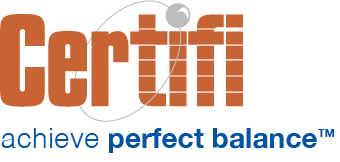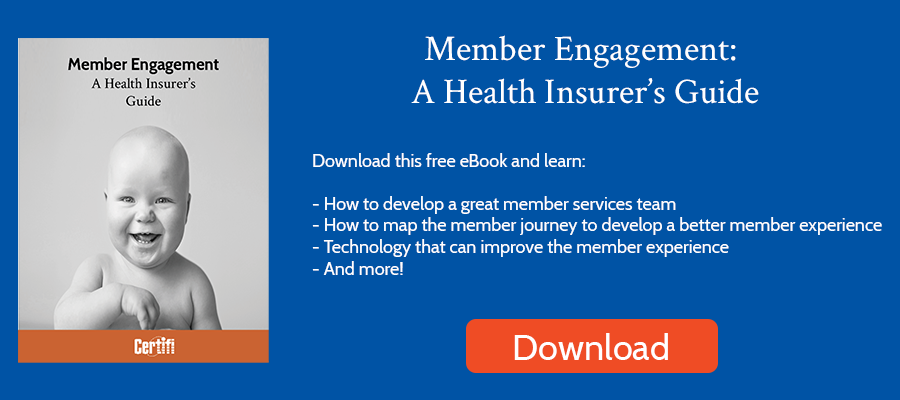According to an analysis published in the Harvard Business Review, the customer experience has a significant impact on revenue. For a subscription business, a member who gives the lowest score will likely only remain a member for a little over a year. Compare that to one who gives a high score who typically remains a member for another six years, and you can see the revenue impact a great customer experience can have.
For a health insurer, creating a great member experience can have a similar impact, especially in competitive individual markets like ACA exchanges or Medicare Advantage. In some ways, those markets are similar to a subscription business. Poor experiences lead to churn.
The best way to create a great member experience is to analyze their interactions with you. The best way to visualize those interactions is by performing a health insurance member journey mapping exercise.
What is Health Insurance Member Journey Mapping?
Member journey maps help health insurers better understand member interactions. They can provide insights into what members think of health insurance interactions, help you identify low-performing interactions, and create a more member-centric approach.
Ultimately the map is a compilation of research and interviews that visually displays common or typical member interactions. Those experiences are displayed as the member sees them, providing broad insight that can help health insurers improve the member experience.
Why Create a Member Journey Map?
Member journey maps make it easier for health insurers to visualize their member interactions. For example, they can be used to:
- Prioritize projects — Health insurance organizations have a lot of competing projects demanding resources. Creating and analyzing a member journey map can help pinpoint member interactions that lead to poor member experiences. Those poor member experiences can lead to member dissatisfaction and churn. That churn has revenue implications, so frequent, underperforming interactions should be highly prioritized compared to other interactions with less revenue impact.
- Enhance a Specific Project — Often, member journey maps are created for a specific purpose, like updating a website or creating a new mobile application. A data-based understanding of the current experience can help you improve the new experience.
- Get Everyone on the Same Page — Often, disparate teams have different views of member interactions. For example, your member services team may handle inbound calls, your IT team may manage or buy an IVR solution and your marketing team may own the web page that explains how to reach member services. The core interaction — the member placing a call to member services — may be split among what can often be siloed teams. Those teams may have different goals. But aligning those teams around one common goal — improving the member experience — can help deliver a better, more unified, result.
How Do you Create a Member Journey Map?
The key to successful member journey maps is collecting the right data. There are several ways to collect that data, that range from:
- Interviewing members as they go through a specific process. This is best for non-digital experiences like phone calls. It can also help you see how specific personas or market segments experience processes differently. It can be the most difficult data source available, but also likely delivers the most actionable information.
- For digital experiences, monitoring tools can provide the data you need. For example, HotJar is a good website heat mapping tool that can tell you where and how members interact with a webpage. Google Analytics is a good tool to use to see how people enter a website, where they go, and how they exit.
- Survey data. Many products can help you survey members after digital experiences. For example, asking them to rate a support technology system or a member interaction.
- Non-member interviews. I frequently have leveraged family members, co-workers, and friends to review digital processes and assets to ensure they make sense. It’s less than ideal in some cases because they typically aren’t going to match your member personas, but can provide color to specific processes with limited data.
What’s Included in Health Insurance Member Journey Mapping?
Personas
Personas are fictional representations of a group of people. They’re commonly used to help you better understand a specific market segment. Some examples you may have for your organization:
- Medicare Advantage New Enrollee
- Young Individual Exchange Plan Member
- Middle-Aged Large Employer Group Plan Member
The better you define your personas, the more likely you are to develop targeted member journey maps. For example, creating a single map for your entire population likely isn’t going to uncover and solve issues as well as understanding your key personas and building maps of their interactions.
Quotes
Taken from members, these are real words that someone represented by a persona told you either about their experience, themselves, or a specific experience in the process. Quotes can be used to help drive home what’s important to a specific persona in their own words.
Member Experience Stages
The member experience stages detail member interactions during their member journey as the member accomplishes specific tasks. Each stage generally has a goal the member is trying to accomplish during that stage. Sample high-level member stages may include:
- Enrollment
- Provider Search
- Understanding Coverage
- Receiving Care
- Improving Health
- Managing Healthcare Finances
- Understanding Claims
- Renewal
You could dig deeper into each of those stages and break them apart further for more depth. For example, enrollment may include the following stages:
- Plan Shopping
- Application
- Onboarding
Steps the Member Takes
A member is generally going to take several steps during each stage. Note that these stages may not always involve your plan. For example, maybe a member is looking for a new healthcare provider. You may think that they’ll visit your provider network web portal to look up and find a provider, but it’s likely that before they do, they may ask a friend or co-worker about the provider they use. After finding a provider in their network, they may go to Google to look at reviews and other provider information.
It’s important to know all the steps a member takes to better understand how you may be able to help them. Given the example above, if your provider database doesn’t include provider reviews, you can improve the member experience by adding them.
Developing a member journey map can help you improve member touchpoints and develop a more member-centric organization. Hopefully, this guide delivers some tips to help you start crafting member journey maps.
Certifi’s health insurance premium billing and payment solutions help healthcare payers improve member satisfaction while reducing administrative costs.



